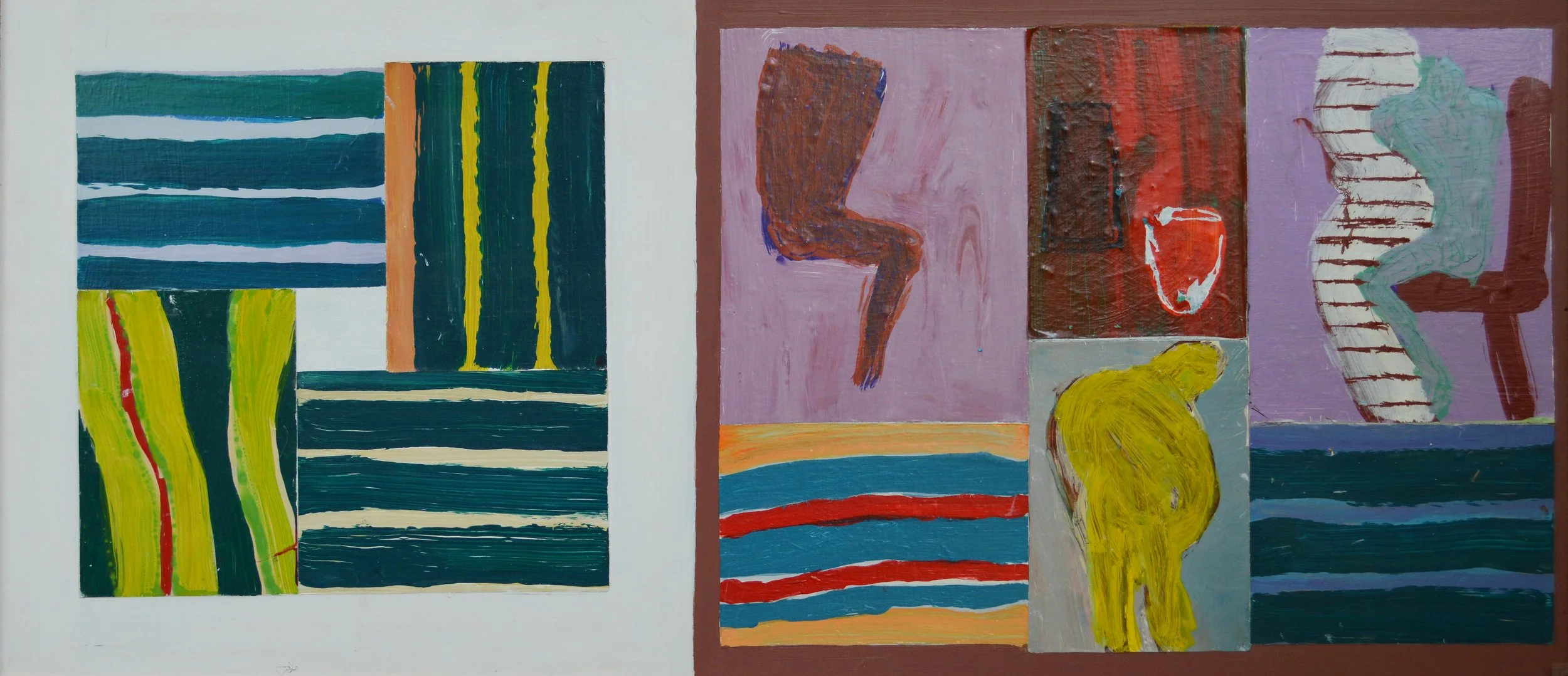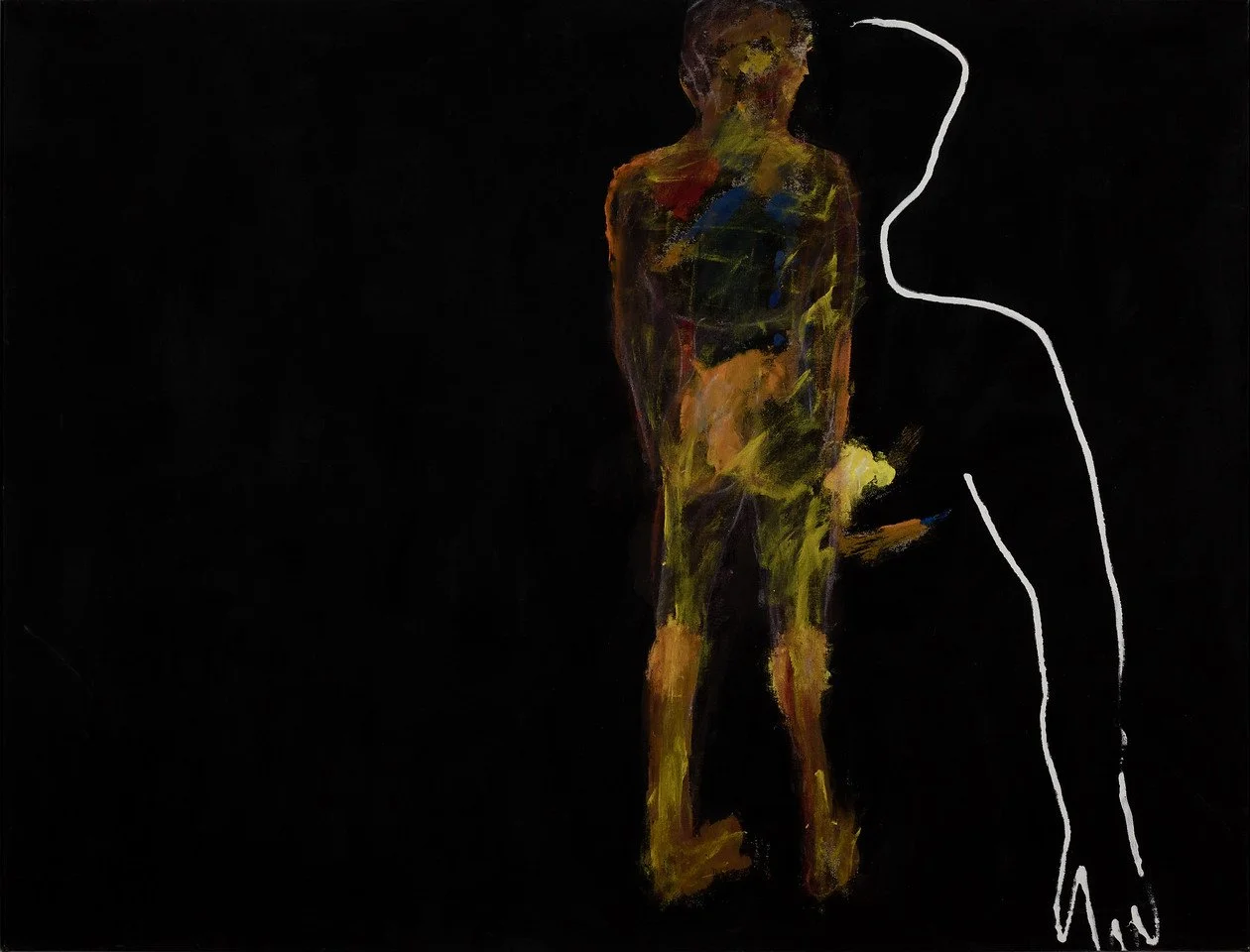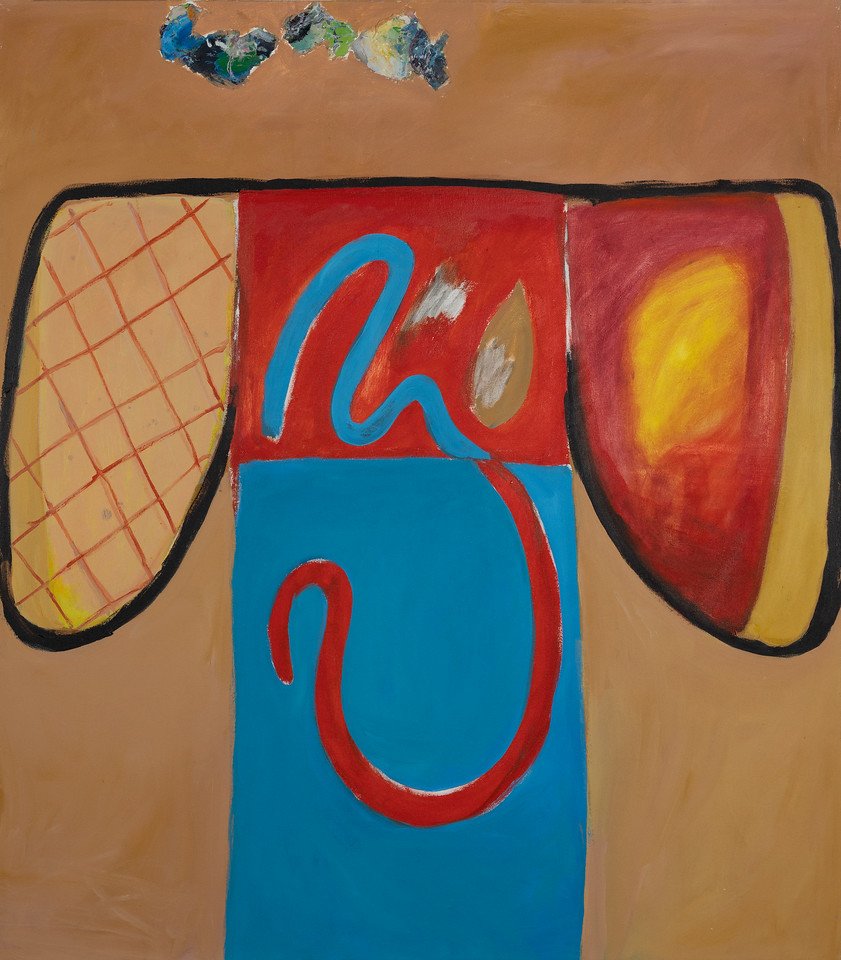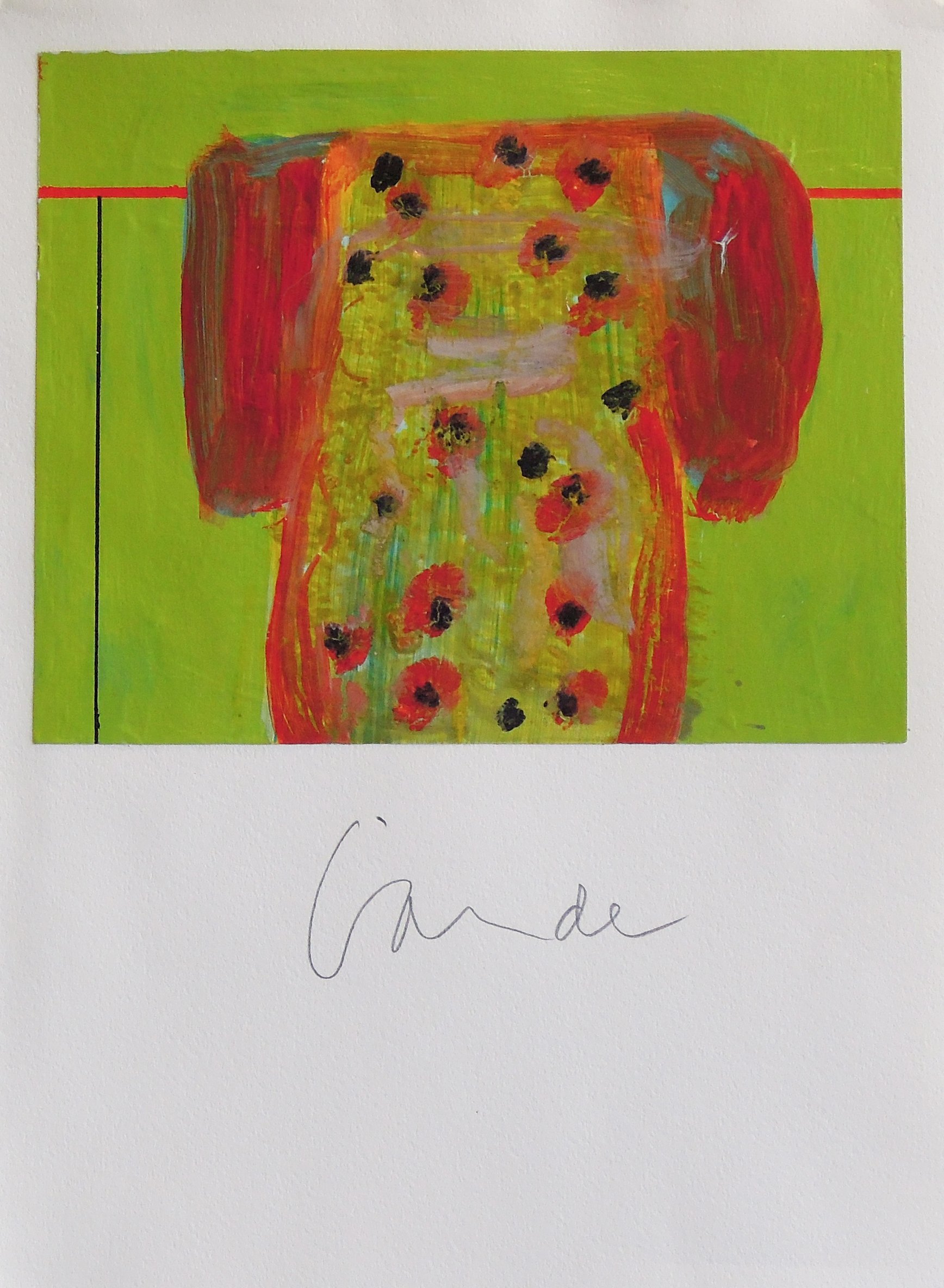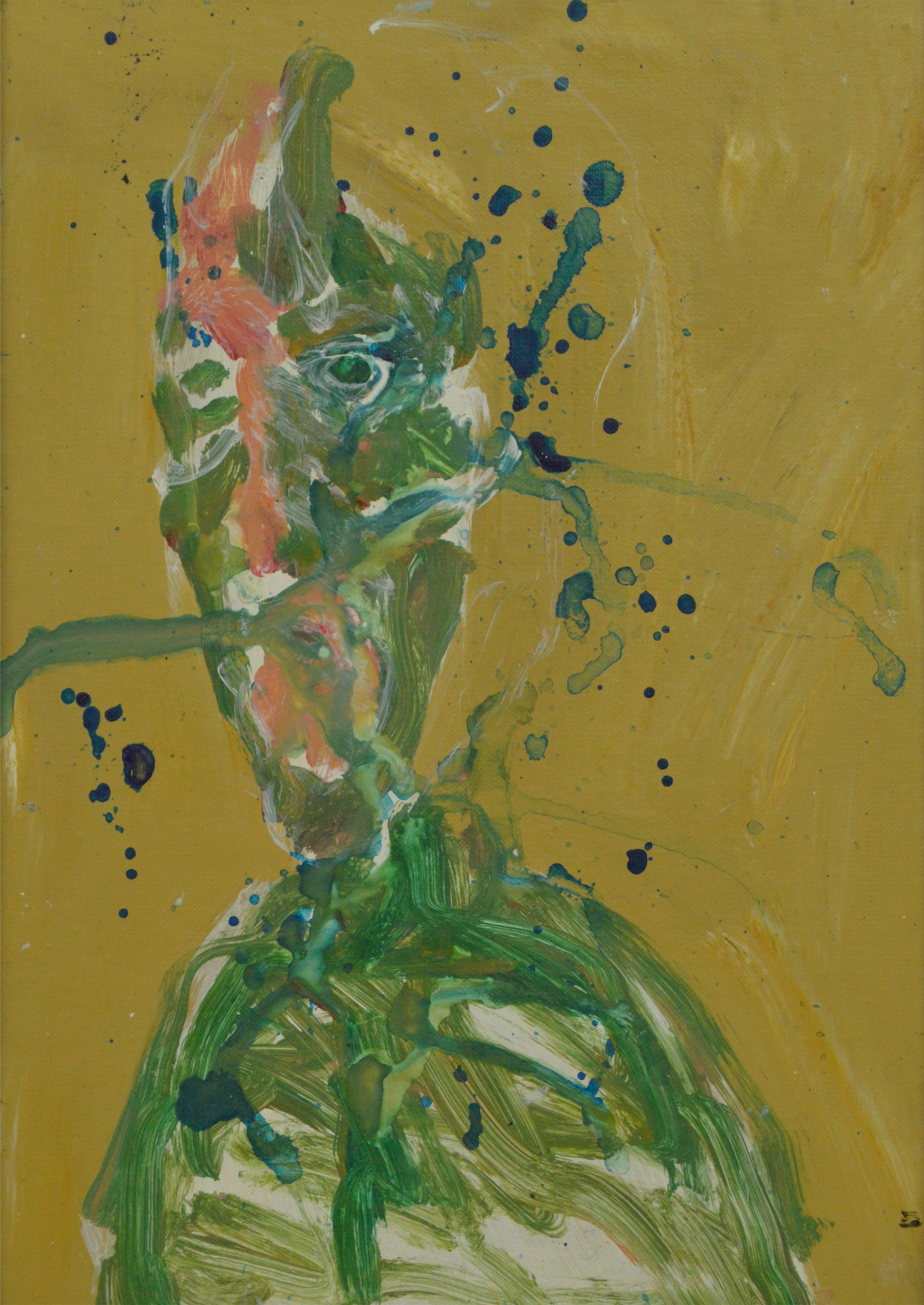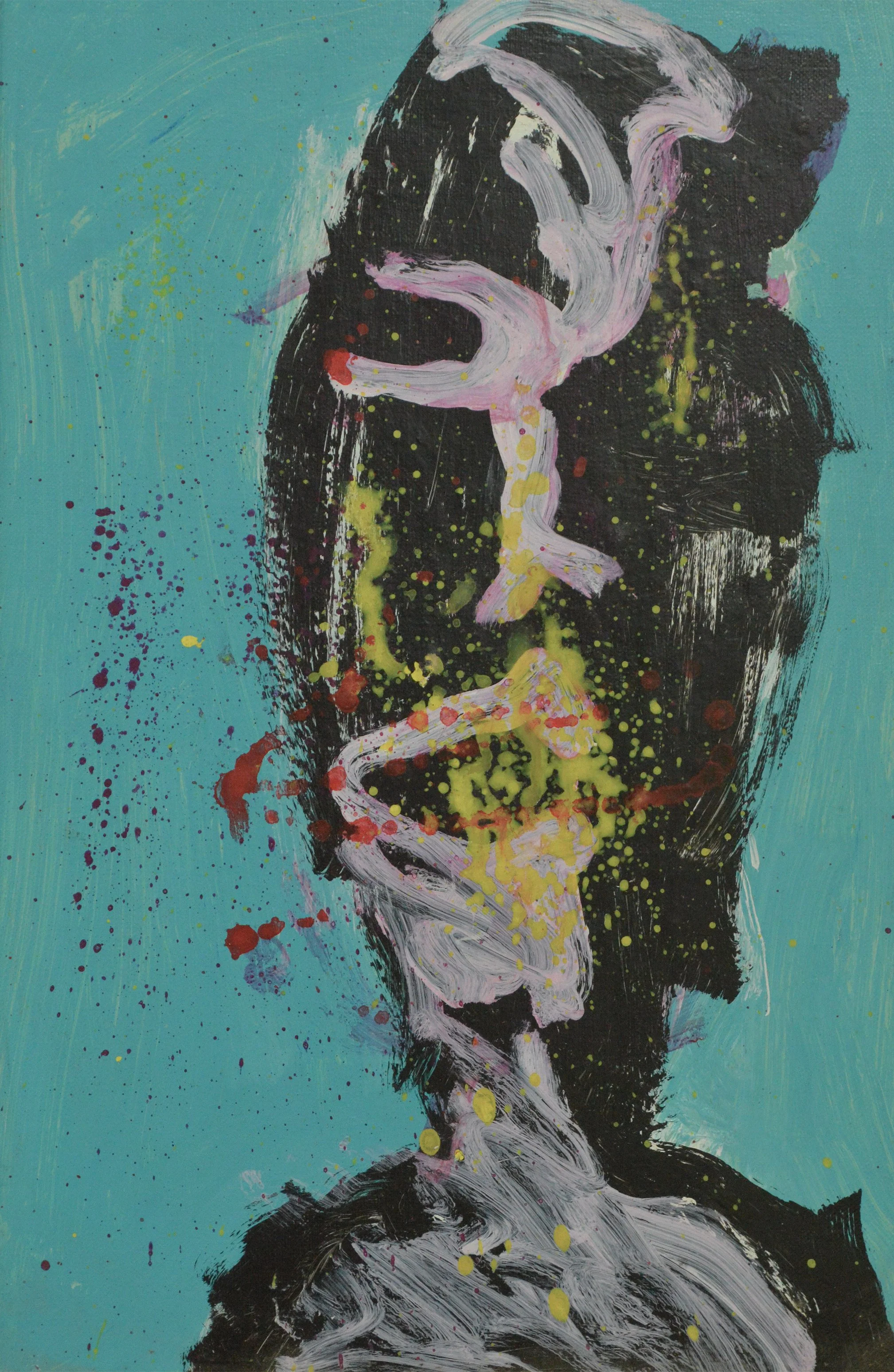Harold Garde (b. June 7, 1923 – d. October 11, 2022): Strappos
Linear Flux (1993)
About The Virtual Exhibition
Cove Street is both honored and proud to carry a fine selection of late American Abstract Expressionist arttist Harold Garde’s strappos. All work featured in our virtual exhibition is onsite and available for viewing in the gallery at any time. A large selection of additional strappos, as well as works in all other media in which the prolific artist worked throughout his seven-decade career, are available for viewing by appointment.
“Harold Garde and the Painted Essence: Expression and Intention,” by Ken Greenleaf
“There has to be someone who will say to us, Here is what you may love; love it. And then we love.” - Marcel Proust, writing about Monet
Looking at a painting by Harold Garde is an encounter with an entire historical thread of modern art almost since its inception in the early 20th century. It’s all there - Bergson’s ideas of intuition and the chance event; the fractured figure from the Cubists, particularly Braque; the hard-won feeling of spontaneity from Matisse; the push-pull colors of Hans Hoffmann. Drawing, of course, goes back as far as human history.
Assembling the threads of history and ideas is a matter of intention, not planning or design. Garde is wise enough to use his toolbox of knowledge and experience as a pictorial foundation - the work itself is intuitive application of skill and improvisation coupled with a friendliness that draws the viewer into his world at that moment.
Garde invites unplanned accidents as part of his process - painterly events that become integral parts of the structure of the image. As things progress the painting creates a cycle of call and response - what happens by itself starts to become the bedrock of the work. And as with jazz or the continuo in Baroque music, there may not be rules but there are reasons - foundational realities that are not haphazard.
Torso of a Modest Person (2008)
Take, for example, “Torso of a Modest Person.” The center is dominated by a vase-like image and a dark red vertical shape. The intersection of the curves and the nearly solid shape first suggest human back, but only slightly. The right side contains some loosely-painted stripes on an uneven background. The left has a few green shapes and a vine-like line snaking from bottom to top. The ‘torso’ bears what at first appears to be a reflection of the the painting’s left side, looking more like a vase than a human back. Maybe there’s a bit of humorous misdirection in the title - the central shape can either be human or crockery, if indeed it needs any objective correlative at all. Improvisation meets formal order. One senses there was a quiet smile when the work was finished.
Stander (1995)
Garde’s method has been consistent throughout most of his career - direct intention coupled with improvisation. He starts with a basic idea that develops into a formally integrated whole. The support - canvas, paper or whatever - becomes a field of activities that are buttressed, tempered or enlivened, covered or revealed, as deemed appropriate. How he works may seem purely intuitive but is actually informed by a lifetime’s understanding of how colors and shapes interact. Chance and instinct are his tools of the trade.
Linear Flux (1995)
The glimpses of narrative in some works provide a context for mood but only tell attenuated stories. “Stander” is a dark field that shows the back of a standing colored figure that shares the painting with a simple white outline of a hand and shoulder. As with this and many other of Garde’s painting with heads or figures, there is no story. The viewers can fill in any tale of their own there is to tell, according to their own mood. Most of Garde’s paintings with faces or heads are like this - you bring your own ideas about what might be happening.
Garde has created an image-printing process he calls Strappo, after a conservatorial technique that can remove the paint on the surface of a fresco by transferring it to a different support. Garde’s process uses acrylic paint applied to glass and lifted off and applied to a painting.
Kimono with Tea Stained Wall
Two works, “Linear Flux” and “Dialog” use this process. The left panel of “Linear Flux” has repeated horizontal and vertical lines. Parts of the right panel repeat the lines mixed with implied human shapes. “Dialog” shows two faces about the same size, appearing to look at each other. The controlled mechanics of printing mingle with the easy painterly hand.
Kimonos as a source of color and shape are one of the many resonant themes this extensive body of work. A good example is “Kimono with Tea Stained Wall,” where red and blue rectangles border one another while a squiggly line that’s blue on the red shape, and red on the blue shape, tie them together in a primary knot. The background is the color of tea, but the apparent stain is not. Sleeve shapes are different - one is yellow with diagonal checkering while the other is red and yellow with what appears to be a stain. And there are a couple of stain-like shapes on the red rectangle. As it turns out the tea stain seems hardly to be on the wall at all. There’s something very Garde-like in this misdirection: What’s there is not what it seems to be, or maybe it is.
Garde has had a long and extraordinarily productive career. This extensive show isn’t a retrospective with a formal chronological order, but maybe that’s the best way to present the broad sweep of his interests and the way that he has gone about the work for most of his life - start with the basics and see how the dialog comes out. At 99, Garde is still working actively the way he always has. This show, a complex population of paintings, suits the way he works, searching for the way things fit together.
Exhibition Video
Artist Talk Video
